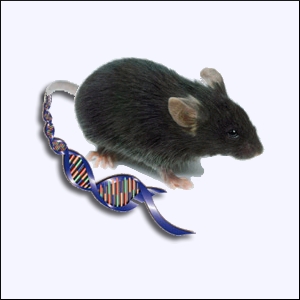The Measure Of Man

The mouse sequence is the phrasebook that is transforming our ability to translate the human book of life. The research articles show that for almost every human gene there is a mouse equivalent, allowing us to translate for the first time the words of two genomes into a common language that can be shared by scientists the world over. The reports show that both species have around 30,000 genes, yet only 300 are unique to either organism–highlighting the tremendous value of the mouse as the most important animal model in biomedical research.
Among the differences described in the papers is the finding that mice have many more genes involved in smell and mating behaviour than humans (pheromones affecting mating choice, some of which are present in urine, and genes responding to sex hormones are more plentiful in mice than men).
“We have deciphered the mouse book of life, and translated this huge tome into a meaningful edition for the research community. The entire biomedical research community can for the first time fully use the this resource to tackle human diseases. They now have powerful tools that will serve them for many decades to come. We share 99 percent of our genes with mice, and we even have the genes that could make a tail!”
Dr Jane Rogers Head of Sequencing at The Wellcome Trust Sanger Institute
“This superb resource has been given freely to all researchers in order to speed the discoveries that will transform human healthcare. Over the last six months, our public web resources have handled nearly six million requests for human and mouse genome sequences. The medical and scientific benefits are already beginning to flow from the freely available information.”
Dr Mike Dexter Director of the Wellcome Trust
“We have learnt a huge amount about human medical problems by studying mouse genetics. This new landmark announcement is of immense importance and will undoubtedly further our understanding of the molecular basis for human diseases and the treatment of the widest range of human disorders.”
Professor Robert Winston Director of NHS Research and Development at Imperial College, Hammersmith Hospital in London
The Wellcome Trust has funded the Sanger Institute to decode the human and mouse genomes and, crucially, provides researchers with simple, free and unrestricted access to the information, through the Ensembl database, which is co-managed with the European Bioinformatics Institute. The Wellcome Trust Sanger Institute generated one-third of the human genome sequence and one-fifth of the mouse. Other partners in the mouse sequencing effort were the Whitehead Institute (Cambridge, MA) and Washington University (St Louis, MO), and Ensembl, which ensured rapid access to the sequence data.
The first phase of the project, funded by the Mouse Sequencing Consortium*, ran for six months from October 2000. This paved the way for the second phase of sequencing, which was completed in May this year. Additional data and analysis were provided by the Sanger Institute, the Whitehead Institute and Washington University, and through collaborations with laboratories around the world. The finishing of the mouse sequence is mainly funded in the UK by the Wellcome Trust; the Medical Research Council has also provided financial support.
The mouse is widely used to model human disease and a close understanding of the parallels between mouse and human at the genomic level will help to inform understanding at the biological level. The sequence, released as it has been generated, has already been used to study genes involved in diabetes, deafness and cancer. The information is regularly updated and refined and made available through public web browsers such as Ensembl.
Footnote
* The results reported today built on work originally performed by the public-private Mouse Sequencing Consortium (MSC), members of which were SmithKline Beecham, the Merck Genome Research Institute, Affymetrix, Inc., the Wellcome Trust, and seven of the US National Institutes of Health.
More information
Facts and Figures
- About 1200 new genes discovered in the human because of mouse-human genome comparisons
- About 9000 genes in the mouse found for the first time
- Mice and humans both have about 30,000 genes–and share 99% of them–but the mouse genome is shorter than that of humans (2.5 billion letters compared with 2.9 billion)
- More than 95% of the mouse genome has been sequenced and analysed
- Mice have many more olfactory genes compared to human–smell matters for mice, especially for sex and mating; they also have more genes involved in reproduction (such as aphrodisin–stimulates mating behaviour in males) and immunity
- It might be said that we are essentially mice without tails–but we even have the genes that could make a tail
- Ninety percent of genes associated with disease are identical in human and mouse, supporting the use of mice as model organisms
- The mouse sequence means that models of human disease–and differences between the species–can be better understood
- More accurate experiments are possible in ‘knock-out’ and ‘knock-in’ mice–models for human disease
- The mouse sequence makes it easier to find the regions that control activity of genes–the ‘dimmer switches’. We understand control of genes only partly and the sequence is a powerful new tool
Model Organism Information
The Wellcome Trust Sanger Institute was founded in 1992 as the focus for the UK sequencing effort of the human and mouse genomes. The Institute is responsible for the completion of the sequence of approximately one-third of the human genome and one-fifth of the mouse, The Institute is also a major contributor to the mapping and sequencing of the zebrafish genome and genomes of a range of pathogens. The Wellcome Trust Sanger Institute is based in Hinxton, Cambridge, UK.


